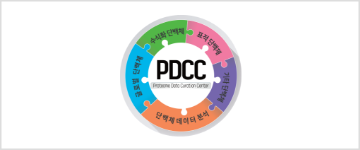2025 Fall
International Convention of PSK
2025 CONVENTION
Abstracts
Korean Pharmaceutical Association Patient Safety Drug Management Center practical training review and current operation status and improvement plan of the National Integrated Narcotics Management System (NIMS)
- Sumin Park1, Seong-Ok Kim*2
- 1Su Min Park
- 2Seong-Ok Kim
The Patient Safety and Drug Management Headquarters of the Korean Pharmaceutical Association consists of the Regional Drug Safety Centers and the Regional Patient Safety Centers. Established in 2013, the Regional Drug Safety Centers perform a variety of activities, including the collection, evaluation, and reporting of adverse drug reactions (ADRs), the review of drug safety information, and the provision of expert responses to adverse events via social media. The Regional Patient Safety Centers, founded in 2018, contribute to fostering a culture of patient safety by receiving and reporting patient safety incidents, conducting prevention activities, and developing and providing educational programs. I participated in a six-week field training program at the headquarters from March 4 to April 11, 2025. At the Regional Drug Safety Center, I conducted WHO-UMC causality assessments for reported ADRs, reviewed recent drug safety updates, and presented a seminar titled “Relationship between dabrafenib and fever.” At the Regional Patient Safety Center, I reported patient safety incidents to the Korea Patient Safety Reporting and Learning System (KOPS), translated patient safety-related reports, and gave a seminar presentation on “ECRI Top 10 Patient Safety Concerns for 2025.” The Narcotics Information Management System (NIMS) is a nationwide electronic reporting system that monitors the entire lifecycle of narcotics, including distribution, manufacturing, dispensing, administration, and disposal, and has been mandatory since May 2018. It was introduced to prevent misuse and illegal diversion of narcotics, strengthen safety management, and reduce overprescription and doctor shopping. The system collects over 120 million narcotics transaction records annually and is utilized through various services, such as the Narcotics Prescription Monitoring Network, Safe Use Helper for Medical Narcotics, Pre-Notification Service for Narcotic Prescriptions, Personal Prescription History Inquiry, and Open Data Utilization. However, NIMS currently faces limitations in real-time monitoring, which restricts immediate detection of duplicate prescriptions at the point of care. Pharmacists also lack authorization to access patients’ full prescription histories, making it difficult to establish an effective surveillance system in clinical practice. To achieve more effective control of drug abuse, it is necessary to integrate the NIMS with the Drug Utilization Review (DUR) system, expand pharmacists’ authority, and transition to an instant reporting and inquiry model. Furthermore, since the mandatory verification of patient narcotic prescription history currently applies only to fentanyl, it is recommended that this requirement be extended to include a broader range of narcotics in the future
Q&A
- There are no registered questions









































